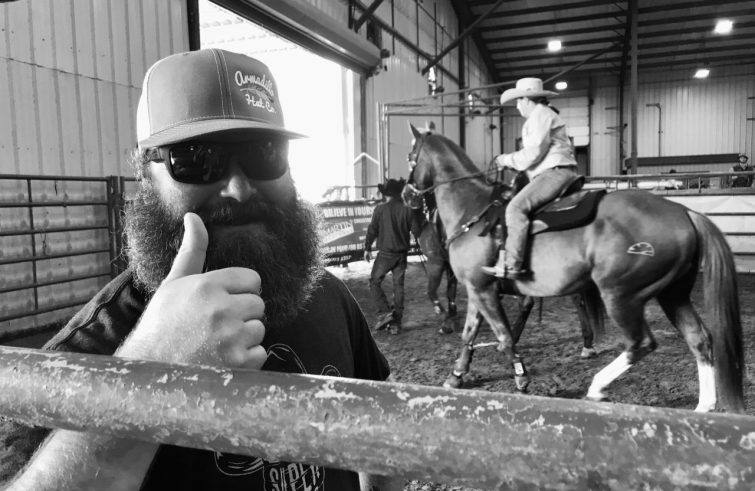
“There are many Americas under the same flag.” Emiliano Bos skilfully encapsulates in this image the United States that in a few days will choose which of the two candidates, outgoing Republican president, Donald Trump, or Democrat Joe Biden, Vice-President for eight years under the Obama administration, will take the White House.
Forty-seven year-old Emiliano Bos, married, two children, is the Washington correspondent for Swiss Television and Radio broadcasting (RSI) since 2015. Prior to his international reporting with Caritas Ambrosiana and Caritas Italy, he worked in local radios and newspapers, followed by reportages from about forty countries, with a special focus on the Balkans, Africa and the Middle East. His book “In fuga dalla mia terra” features years of professional experience on the theme of migration, of which he is a renowned expert.
 Your unique motorhome election tour throughout the States could be followed via social media. Why did you make this choice?
Your unique motorhome election tour throughout the States could be followed via social media. Why did you make this choice?
I live and work in Washington, a “political bubble” in a country with 320 million inhabitants. I felt the need to travel across the United States, to talk with ordinary people, to travel a multifaceted nation from south to north, from Arizona to Wisconsin. With my colleague from the French-language Swiss Radio, I rented a vehicle that made it possible for us to narrate a story on-the-road, with partially planned stop-offs and meetings, as well as many unexpected surprises. For example, we had first hand experience of the differences between the rural and the industrial States; we met people from different backgrounds and speaking different languages, with different stories, which gave us an extremely interesting insight into the soul of the Country.
You travelled from Nogales, Santa Cruz County on the Mexican border, to Lake Michigan, a stone’s throw from Canada, passing through the Midwest; from large urban centres to small farmers villages. Which America did you see?
I would say that we had a close encounter with more than one America. Meaning that people live in very different ways in different places, with different mentalities shaped by very distinct narratives. Living and working in a skyscraper in Chicago and life in a Texas ranch are two very different things. It should also be noted that most people don’t normally read the New York Times: they may have access to CNN or Fox news, which in turn describe two conflicting daily realities. There are countless local newspapers and TV stations, along with the impact of social media, which – as we all know – is also a vehicle of misinformation.
Thus some people see one reality and some see another.
Just think of Covid: despite 8 million cases of contagion and 220,000 deaths, some people wear masks and comply with precautionary regulations while others deny the truth. We went to a fast-food for breakfast in a small village in Missouri – one of those places where they serve scrambled eggs, pancakes, and where waiters always refill your cup with diluted coffee – and none of the elderly people there was wearing a mask.
Any other peculiarities?
Well, the wall that was intended to stop Mexican immigration… for the most part has not been built, certainly Mexico has not paid for it, as Trump had promised, and in some cases, as in southern Arizona, the wall harms Native Americans – the Tohono O’odham, the “people of the desert” -, as it was erected on a cemetery sacred to them, dividing the community on both sides of the fence.
When we were in Harrison, Arkansas, we realized why the town is considered the most racist in the USA:
on display is the confederate flag (and bikini), the most controversial flag in America, used by white supremacists. It is also home to the Ku Klux Klan… In Miami, a hamlet in Texas, not the city in Florida, we met with the administrator-judge: in the past election Trump won 94% of the vote. “Here we vote Republican” they explained, “no matter the candidate.” In other areas, however, most voters are resolutely pro-Biden. This is especially true in big cities like New York or the State of California. Along the famous Route 66 we stopped in a small cafe run by Mike, actually Miguel, a Mexican native, a staunch Republican, who every day conducts his home-made election poll consisting of two tip jars: one for Biden, the other for Trump. The latter increasingly fuller…
It’s obviously impossible to forecast how the election will play out on November 3. But also based on your account, the country appears to be polarized. The vote is taking place at a difficult time, amidst a health crisis, economic slowdown, mounting racism.
The situation is indeed very complex. The election campaign was somewhat marked by the coronavirus, with fewer in-person rallies and more emphasis on TV debates. Especially in the first TV debate, we saw two candidates unable to communicate with each other. Not to mention the coronavirus: in the face of a tragic pandemic, Trump tried to make people believe that the virus was under control. “You see, I got out of it too,” he implied. Biden, an establishment figure, sought to turn the electoral process into a kind of referendum against the incumbent president, highlighting Trump’s failings, unable, in his opinion, to act effectively to stem the spread of the virus. It should be noted that Biden reiterated the idea that, if elected, he would be everyone’s president. Conversely, Trump’s statements appear to be divisive, as evidenced in many of his tweets.
The US electoral system further complicates things. Do you agree?
It can be said that it’s extremely different from the European electoral system. Moreover, it should be noted that almost 60 million registered voters have already voted by mail. The mail-in ballots were de-legitimized by Trump, who spoke of fraud on various occasions. A legal battle is already underway in this regard, with more than 300 election-law cases, so the matter may well end up in the Supreme Court, currently having a conservative leaning.
 But how does public opinion decide? What are opinion polls showing?
But how does public opinion decide? What are opinion polls showing?
Polls show that Biden has a large lead over Trump. However, national data is not very revealing. All that matters is how the electoral college will vote – notably in swinging States such as Florida, Pennsylvania, North Carolina, Arizona, Ohio, Michigan and others. There is also a specific problem that needs to be taken into account.
Which one?
It concerns access to voting. Some clear dynamics show that the constitutional right to vote is not fully guaranteed in all States, especially to certain categories of citizens. There are now countless cases, even very concrete ones. And finally, we must not forget another key factor: powerful lobbies are active in the U.S. presidential election, with huge financial contributions to advertising and campaigning. Here, whoever has the most amount of money wins.















